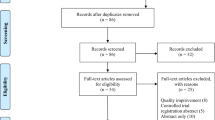Abstract
Objective:
To establish evidence of clinical validity and reliability of the Neonatal Pain, Agitation, and Sedation Scale (N-PASS) in neonates with acute heelstick pain.
Study Design:
Prospective psychometric evaluation, randomized crossover design. Two nurses administered the N-PASS simultaneously and independently during an actual and sham heelstick done in randomized order. One nurse also administered the Premature Infant Pain Profile (PIPP) concurrently with the N-PASS. Heelsticks were videotaped for repeat analysis.
Result:
Construct (discriminate) validity was established through the Wilcoxon Signed-ranks test, comparing the distribution of the heelstick and sham N-PASS scores. The mean pain scores were 3.93 (2.30) and 0.81 (1.21) for the heelstick and sham procedures, respectively (Z=−6.429, P<0.0001). Convergent validity was demonstrated by correlation with the PIPP scores (Spearman rank correlation coefficient of 0.75 and 0.72 for raters 1 and 2, respectively). Inter-rater reliability was high, measured by intra-class coefficients; the ICC estimates (95% CI) of the pain scale were 0.86 (0.78, 0.92) and 0.93 (0.88, 0.96) for a single rating and average of two independent ratings, respectively (P<0.0001). Internal consistency, measured by Cronbach's alpha, was evident (0.84 to 0.89). Test–retest reliability was demonstrated by repeat scoring of videotaped heelsticks, measured by Spearman's rho correlation (0.874, P<0.0001).
Conclusion:
This research provides beginning evidence that the N-PASS is a valid and reliable tool for assessing acute heelstick pain in infants 0 to 30 days of age, 23 to 40 weeks gestation.
This is a preview of subscription content, access via your institution
Access options
Subscribe to this journal
Receive 12 print issues and online access
$259.00 per year
only $21.58 per issue
Buy this article
- Purchase on Springer Link
- Instant access to full article PDF
Prices may be subject to local taxes which are calculated during checkout
Similar content being viewed by others
References
Barker DP, Rutter N . Exposure to invasive procedures in neonatal intensive care unit admission. Arch Dis Child Fetal Neonatal Ed 1995; 72: 47–48.
Simons SH, van Dijk M, Anand KS, Roofthooft D, van Lingen RA, Tibboel D . Do we still hurt newborn babies? A prospective study of procedural pain and analgesia in neonates. Arch Pediatr Adolesc Med 2003; 157: 1058–1064.
Duhn LJ, Medves JM . A systematic integrative review of infant pain assessment tools. Adv Neonatal Care 2004; 4: 126–140.
Byers JF, Thornley K . Cueing into infant pain. MCN 2004; 29: 84–89.
Hummel P, van Dijk M . Pain assessment: current status and challenges. Semin Fetal Neonatal Med 2006; 11: 237–245.
Johnston CC, Stevens BJ, Yang F, Horton L . Differential response to pain by very premature neonates. Pain 1995; 61: 471–479.
Gibbins S, Stevens B, McGrath PJ, Yamada J, Beyene J, Breau L et al. Comparison of pain responses in infants of different gestational ages. Neonatology 2008; 93: 10–18.
Stevens BJ, Pillai RR, Oberlander TE, Gibbins S . Assessment of pain in neonates and infants. In: Anand KJS, Stevens BJ, McGrath PJ (eds). Pain in Neonates and Infants. 3rd edn. Elsevier: Edinburgh, 2007. pp 67–90.
Hummel P, Puchalski M, Creech SD, Weiss MG . Clinical reliability and validity of the N-PASS: neonatal pain, agitation and sedation scale with prolonged pain. J Perinatol 2008; 28: 55–60.
Duhn LJ, Medves JM . A systematic integrative review of infant pain assessment tools. Adv Neonatal Care 2004; 4: 126–140.
Stevens B, Johnston C, Petryshen P, Taddio A . Premature Infant Pain Profile: development and initial validation. Clin J Pain 1996; 12: 13–22.
Crellin D, Sullivan TP, Babl FE, O’Sullivan R, Hutchinson A . Analysis of the validation of existing behavioral pain and distress scales for use in the procedural setting. Paediatr Anaesth 2007; 17: 720–733.
Johnston CC, Stevens BJ, Franck LS, Jack A, Stremler R, Platt R . Factors explaining lack of response to heel stick in preterm newborns. J Obstet Gynecol Neonatal Nurs 1999; 28: 587–594.
Porter FL, Wolf CM, Miller JP . The effect of handling and immobilization on the response to acute pain in newborn infants. Pediatrics 1998; 102: 1383–1389.
Acknowledgements
We thank the staff nurses, nurse practitioners, and physicians in the two NICU's for their cooperation in this research, especially those nurses who collected data. The primary author was funded by the American Nurses Foundation, Gloria Smith Scholar.
Author information
Authors and Affiliations
Corresponding author
Ethics declarations
Competing interests
The authors declare no conflict of interest.
Rights and permissions
About this article
Cite this article
Hummel, P., Lawlor-Klean, P. & Weiss, M. Validity and reliability of the N-PASS assessment tool with acute pain. J Perinatol 30, 474–478 (2010). https://doi.org/10.1038/jp.2009.185
Received:
Revised:
Accepted:
Published:
Issue Date:
DOI: https://doi.org/10.1038/jp.2009.185
Keywords
This article is cited by
-
Facial thermal response to non-painful stressor in premature and term neonates
Pediatric Research (2023)
-
COMFORTneo scale: a reliable and valid instrument to measure prolonged pain in neonates?
Journal of Perinatology (2023)
-
Pädiatrische Palliativversorgung in der Neonatalperiode
Die Gynäkologie (2022)
-
“Passive or interactive virtual reality? The effectiveness for pain and anxiety reduction in pediatric patients”
Virtual Reality (2022)
-
Opioid and benzodiazepine use during therapeutic hypothermia in encephalopathic neonates
Journal of Perinatology (2020)



